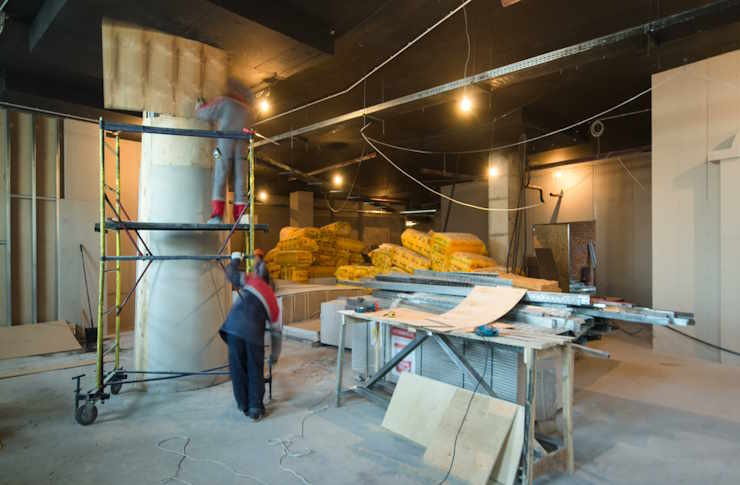Regulatory and Safety Considerations for Rooftop Work Worldwide
Regulatory frameworks and safe working practices for rooftop work vary by jurisdiction but share common priorities: protecting workers, preventing water ingress, and ensuring structural compatibility. This article outlines practical safety measures, material considerations, and permitting issues relevant to waterproofing, insulation, drainage and refurbishment projects.

Roof work presents distinct regulatory and safety challenges wherever it is performed. Regulatory bodies typically focus on fall protection, structural capacity, weatherproofing and environmental controls, while building owners and contractors must coordinate permits, inspections and recordkeeping. For projects involving waterproofing, membranes, coatings or a full retrofit, careful planning ahead of any rooftop access reduces risk and ensures compliance with local services and building code requirements. This overview highlights key technical and safety considerations relevant to refurbishment and ongoing maintenance of flat roofs.
Waterproofing, membranes and coatings
Waterproofing systems and membranes are central to rooftop refurbishment. Common materials include EPDM and TPO single-ply membranes, bitumen-based systems, and liquid-applied coatings. Each system has specific installation standards and warranty conditions that affect compliance: for example, manufacturer instructions often specify substrate preparation, temperature ranges and overlap/seam requirements. Coatings designed for repairs or protective layers may alter solar reflectance and lifespan. Ensuring installers are trained and that products carry appropriate certification or testing data helps meet regulatory expectations and minimizes the risk of leaks or premature failure.
EPDM, TPO and bitumen material considerations
Material selection affects long-term safety and performance. EPDM offers flexibility and puncture resistance, TPO is valued for heat-welded seams and reflectivity, while bitumen systems are familiar for torch-on or cold-applied applications. Regulations may restrict certain application methods—such as open flames on roofs—without permits or fire watches. Compatibility with existing layers, expected roof traffic, and chemical exposures should guide choices. Documentation of product data sheets and installation records supports inspections and can be required by insurers or local authorities during refurbishment or retrofit projects.
Insulation and retrofit requirements
Insulation upgrades and retrofits frequently trigger regulatory review related to energy codes and condensation control. Adding insulation alters roof thermal profiles and can affect drainage and edge details; thereby changes to insulation must be assessed for vapour control and compatibility with membranes. Retrofit projects often require drawings and specifications submitted to local services, particularly where roof loads or parapet heights are modified. Compliance with energy efficiency standards may also influence acceptable insulation types and thicknesses, so integrate thermal design early in the planning phase to avoid rework and ensure regulatory approval.
Drainage, parapet and flashing standards
Proper drainage, secure flashing and parapet detailing are essential both for waterproofing performance and for meeting code requirements. Ponding water can accelerate material degradation; design guidance and many codes require adequate slope or internal drainage to avoid standing water. Flashing at roof-to-wall junctions, around penetrations and at parapets must be specified and executed to prevent leaks; inspectors commonly check flashing continuity and mechanical fixings. Parapet heights may be regulated for fall protection, and changes to parapets or roof-edge guards often need permitting and structural confirmation to satisfy safety and building code criteria.
Safety protocols for rooftop work and fall protection
Worker protection is the most scrutinized element of rooftop work. Fall arrest systems, guardrails, safety nets and personal protective equipment should align with applicable workplace safety regulations. Tasks like membrane welding, torching or using adhesives introduce fire and inhalation hazards; hot-work permits, designated fire watches and ventilation controls may be required. Training in harness use, edge awareness and emergency rescue plans is commonly mandated. Employers and contractors should verify local licensing for high-risk activities and ensure that any subcontractors provide evidence of competency and insurance coverage before accessing the roof.
Inspection, maintenance and documentation practices
Regular inspections and maintenance reduce regulatory risk and extend roof life. Scheduled checks for membrane seams, flashings, drainage outlets and coating integrity help identify issues before they escalate. Keep written records of inspections, repairs, material warranties and any permits or approvals—authorities and insurers often request documentation during compliance reviews or claims. Maintenance plans that specify cleaning of drains, resealing around penetrations and prompt repair of damage can be part of asset management and support safe ongoing use of rooftop spaces.
Conclusion Rooftop projects intersect multiple technical and regulatory domains: material selection (membranes, coatings, bitumen), structural and thermal changes (insulation, retrofit), water management (drainage, flashing, parapet) and occupational safety. Success depends on early coordination among designers, installers and local services, clear documentation, and adherence to safety protocols. By aligning project planning with applicable codes and manufacturer guidance, refurbishment and maintenance work can meet regulatory expectations while protecting workers and building performance.





